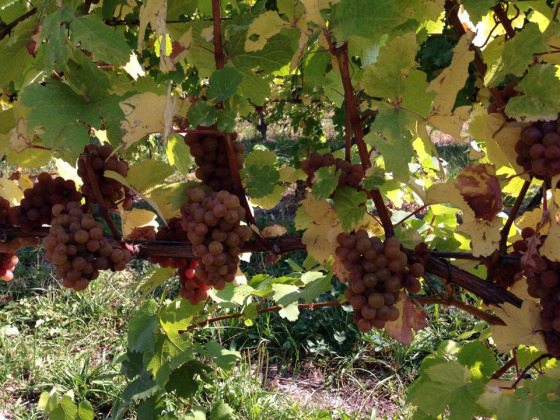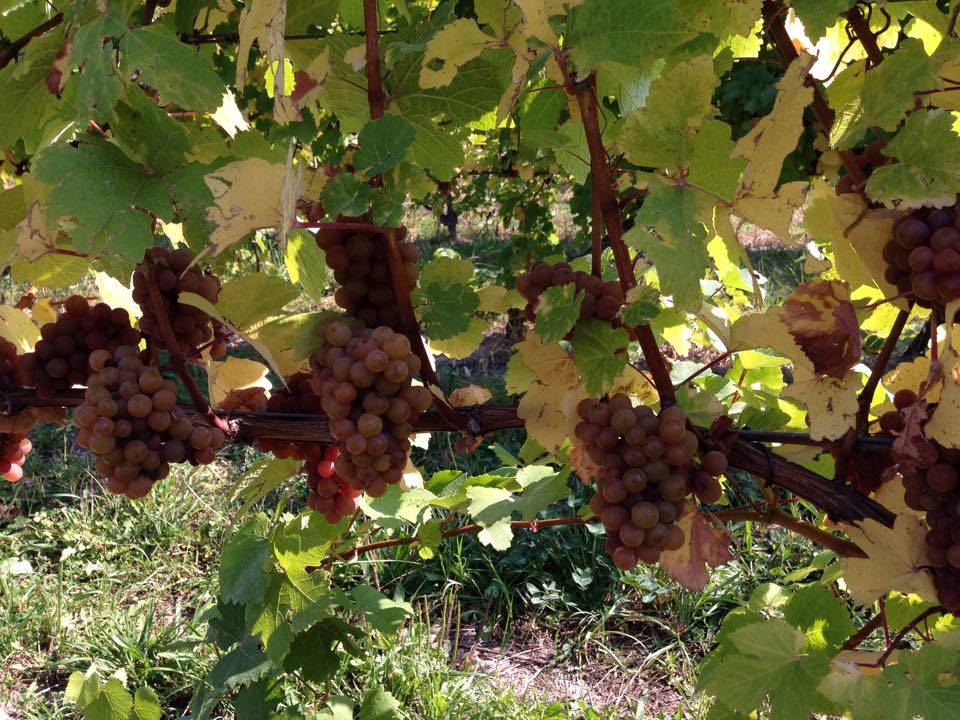
To say that the 2014 vintage was in crisis mode before September is not an understatement.
“I’d say it was like 2009, but it was probably in worse shape,” one winemaker who asked not to be identified told me. “Way, way behind in the numbers, and way, way behind in flavor development.”
The running joke was that the 2014 wines might be harvested in early 2015. That’s thanks to a snowballing (pardon the too-soon pun) of a brutal and costly winter, a late spring, a cool summer and a cold August. Veraison occurred nearly a month after it did in 2012 for some growers.
But there is hope, provided by what is fairly described as the finest September in a generation for the Finger Lakes wine industry. It is the driest September on record, and records began in 1973. September is typically wet, with an average of 3.7 inches of rain. 2014’s September saw less than an inch of total precipitation.
It was warmer than average, but not by remarkable standards. The key was the dry weather and the near-constant sunshine. Flavors finally awoken, acids slowly began to drop, and disease pressure lifted tremendously.
That does not guarantee a happy group of winemakers, however.
“Even with this September, a lot of the reds will struggle to fully ripen,” said August Deimel, winemaker at Keuka Spring Vineyards. “There’s only so much to be done after a cool summer. At some point, you just run out of season.
Maybe. With a forecast calling for 80 degrees early this week, the region’s winemakers are perhaps greedily hoping that October will match September.
“We have almost no disease pressure, so we’re letting things ripen way longer than we would normally be able to,” said Dave Breeden, winemaker at Sheldrake Point. Most wineries are just now picking the early varieties; pinot has been largely picked, but that’s about it for vinifera. The top producers have barely begun to consider riesling.
At Silver Thread Winery, winemaker and owner Paul Brock says 2014 is starting to look like 2009. And he considers that a compliment. “Some winemakers and press glitterati nearly threw 2009 in the trash for the difficulties we had getting grapes ripe,” Brock said. “In the end I consider 2009 the best riesling vintage, possibly ever. This was a perfect storm of the coming of age of the region and the ideal conditions to create high-acid, flavor-bursting wines with age-worthy potential.”
And now? “2014 is very different in how we are getting there, but much the same in how I feel it will end,” Brock said.
The month of August holds the key to the acidity of this vintage. Typically after veraison, the warm or hot August weather works to erode the acids. But the cold August of 2014 preserved the sky-high acidity. For riesling, that could mean the kind of structure that will create long-lasting wines, but riesling also requires flavor development to achieve that unquantifiable “complexity.” September put riesling back on track, but it will need more.
At Red Newt on Seneca Lake, winemaker Kelby Russell sees some strange, interesting characteristics in the grapes.
“The skins are thicker and tougher than I can remember in a long time, even though the seeds are getting brown and mature,” Russell said. What does that mean? It’s hard to say, but it could mean more structure for reds. And wouldn’t that be interesting: structured, tannic, high-acid, high-toned red wines. That’s possible in most non-pinot varieties; the glorious September pulled pinot in a very favorable category, as pinot ripens very early. (In other words, no one benefited more than pinot.)
“It is a bit of a scatter shot,” Russell said about the rest of the vintage. “I think it will come down to people making gut calls and running with it.”
The other wildcard is the low 2014 production. Some producers lost around half their typical yield before the season even began, with the harsh winter killing buds (but not the full vines in most cases). That led lawmakers to step in and offer help in various forms; wineries will have to decide if they can accept a smaller production year, or if they want to augment their wines with out-of-region juice. Most producers tell me they’re toughing it out without augmentation.
A summer hailstorm made matters worse in a small section of southeast Seneca Lake. Lou Damiani, winemaker and co-owner at Damiani, told me, “The hail did some damage, so production is somewhat down after the cooler, wetter year, and the harsh winter.”
But September changed Lou’s mood, just as it seemed to affect his colleagues. “It helped,” he said. “If the weather continues to hold out, it could be a relatively nice year. Maybe online with 2013 or maybe 2008.”
The best guess is that 2008 is too optimistic a comparison; that was a banner riesling vintage, with complex flavors aided by botrytis, but also offered a strong red wine year. Barring a standout October, most non-pinot red varieties look to be lagging. That doesn’t mean they can’t be good; that means that they won’t match the standard of, say, 2012. And it means that consumers will have to choose carefully, and target the producers who work with the top growers.
By now we know that no one can write the story of a vintage this early. But it’s worth noting that September changed expectations. Kelby Russell reported watching more NFL football in September than ever before, simply because he didn’t have the maelstrom of harvest beckoning. But it’s coming, and this is a cool-climate region. It’s not irrational to hope that 2014 becomes a classic cool-climate vintage.

